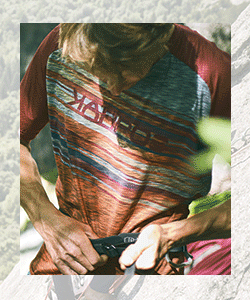Finger Strength : No-Hanging vs Hangboarding.

In climbing, the most common tools for developing finger strength or endurance (referred to as “grip” by Ninja Warrior enthusiasts) are the fingerboard, Güllich board, or Kilterboards. With the trend of wooden accessories, alternative accessories called “no-hang systems” have emerged.
The concept is simple: being able to pull on the fingers without necessarily having to hang. These are blocks or medallions with one or several finger holds (mono or two-finger pockets) and a cord. This allows them to be either hung at a height to be pulled on or to suspend weight for finger training.
So, should we throw away our fingerboards or turn them into firewood and optimize our trips to the supermarket by hanging our grocery bags on these no-hangs?
At La Fabrique Verticale, we have a sense of sacrifice, so when it comes to new training practices or tools, we put them to the test. Here’s our feedback based on our experience.

No-Hang Systems
Suspension blocks were designed as alternative accessories to the fingerboard for finger training. There are now several models available on the market. They are essentially micro fingerboards that can easily be slipped into a bag before heading to the gym or the cliffs.
The main argument is that these blocks allow for extremely analytical training, particularly by limiting biases that exist when doing fingerboard hangs. Anyone familiar with this tool knows that suspension times can be increased by positioning the body optimally under the fingerboard, especially by engaging the core muscles. With no-hang systems, the effort is strictly limited to the muscles of the forearms.
Advantages of No-Hang Systems
One of the major advantages of these systems is the ability to finely adjust the load to the finger’s capacity, whether together or individually. By attaching weights through the cord, you exert the effort to lift the weight. It either lifts or it doesn’t. It’s very binary. This allows for precise quantification of progress during a training program. Furthermore, you can work with loads much lower than your body weight. There’s no need to be a mutant to use a 10mm edge with one hand. You can say goodbye to the approximations associated with using elastic bands for unloading or the struggle of setting up counterweights/pulleys.
This modularity of the load and this type of training appear to be very interesting in several situations.
Firstly, during the rehabilitation phase after an injury, as it allows for individual finger engagement and easy control of training progressiveness.

For certain shoulder injuries where mobility is restricted, it is still possible to keep the fingers active without having to hang. This is also true when it becomes difficult or tricky to hang.
From a practical standpoint, these tools also have certain advantages. Due to their compact size, they can easily accompany us during warm-up at the cliffs. Moreover, if, for example, during a trip, we only have access to a “regular” fitness gym, we can still train by attaching them to a cable machine pulley.
Limitations of No-Hang Systems
The major limitation of these tools is the flip side of their advantage. While they allow for isolated finger training, it may not necessarily mimic climbing positions, especially if they are used for deadlift training. In the biological context of climbing, the ability to hold onto grips relies not only on the engagement of the gripping muscles but also on the muscle chains that extend from them.
Our Experience
We have used two no-hang systems: a ring specifically designed for mono-finger training and the Stone Hanger for working on edges.
No-Hang Systems in Warm-Up
During warm-ups, we particularly appreciate being able to individually engage the fingers with the ring, connected either to an elastic band or a few kilograms of weight. It’s very satisfying to be able to adjust the pulling force according to each person’s capacity. Initially, the ring can be placed on the second phalanx, and then slid to the third to specifically engage the deep flexor muscles of the fingers.

The same goes for the Stone Hanger, especially at the cliffs when the approach hike is a bit long and we don’t want to carry too much weight. Regarding the Stone Hanger, its uniqueness should be highlighted. Specifically, it features a mineral insert, which provides a nice grip sensation that is less smooth than wood, even though it may not be suitable for larger fingers.

No-Hang Systems for Training
We used the Stone Hanger during a maximal finger strength development cycle. The ability to easily quantify (and increase!) the load from one session to another is very motivating. Modulating the weight by switching between hands is also convenient.
The “deadlift” movement does require some precautions when lifting heavy loads. The simplest approach for us is to place the weight between the feet, bend the legs, and straighten the back at the start of the movement.

We also noted the importance of paying attention to the positioning of the point of traction on the cord. If it shifts to one side or the other when lifting the weight, it can put more strain on the little finger or, conversely, the index finger. Therefore, it’s necessary to properly position and balance the system before each effort.
In conclusion, while we haven’t reached the point of taking our wooden ring to the supermarket, no-hang systems have become part of our regular warm-up routine and complement our training on the fingerboard or Güllich board.










